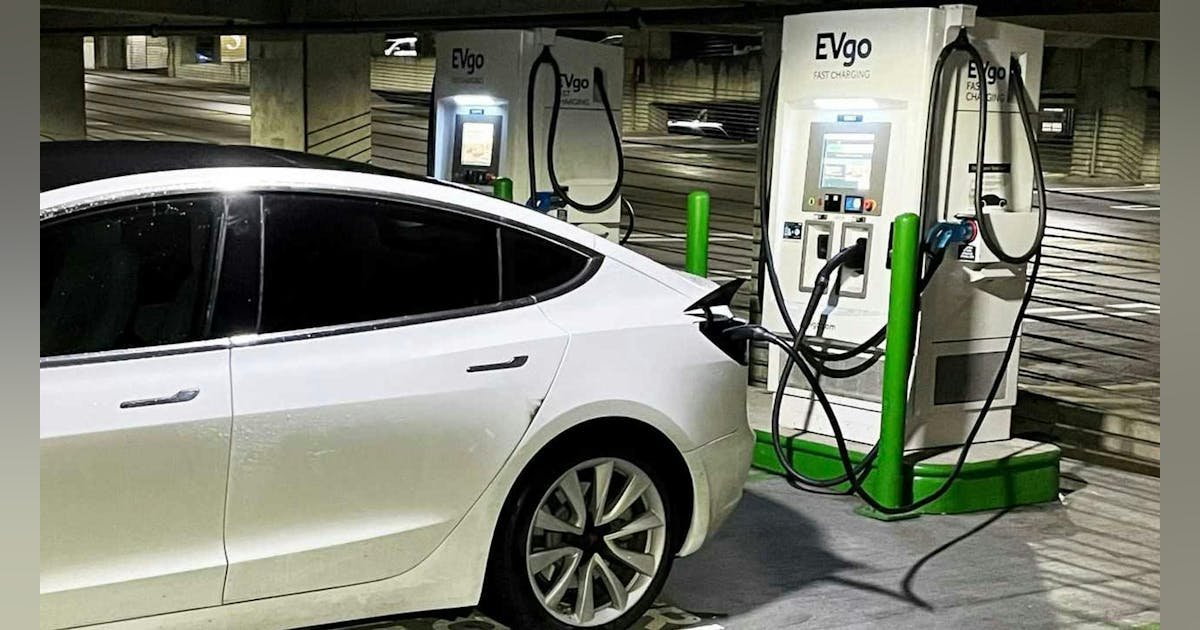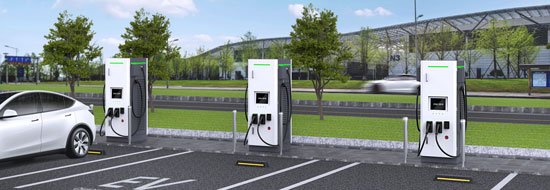However, shortly after that article was published, the forces of natural selection took over. It’s now far easier to list the handful of companies who will still use CCS than enumerate the vast number of manufacturers who will be rocking NACS ports on their EVs’ flanks by 2025.2 This article presents an overview of the NACS interface, its journey toward becoming a formal standard, and a look at some of the issues involved in its adoption.
The Transition from CCS to NACS: A Rapid Shift in EV Charging Standards
The origins of the shift from CCS to NACS can be traced back to the fall of 2022, when Tesla opened its then-proprietary standard to make the specification available to other EV manufacturers. NACS’s sleeker, more compact form factor, and its ability to support charge currents of up to 1000 A, were compelling. The driving force behind its widespread adoption may have been the potential for other manufacturers’ cars to gain access to Tesla’s extensive, and rapidly expanding, national network of NACS-compatible charging stations.
As of this writing, Energy Your Way reports that Tesla currently has over 19,800 charging stations and over 73,000 individual charging points across the U.S., with over 12,800 of those in California alone. This includes over 1,000 Supercharger-equipped locations, with roughly 17,000 individual Superchargers.
Driven by this combination of market and technical realities, SAE International announced that it had created a task force to turn Tesla’s specification into a formal standard in June of 2023. In an uncharacteristically short period of time it released the SAE J3400 EV Coupler Standard, on December 18, 2023.3 (Note: After the release of the formal standard, Tesla removed the documentation for the NACS interface from its website, but it’s still available at the time of this writing by using a Chrome browser to access this link.)
Understanding the Shared Pin System in NACS and SAE J3400
Both the NACS and the SAE J3400 EV Coupler standards are based on a compact 5-pin form factor (Fig. 2). One of its unique features is that, unlike most previous EV charging systems, it uses the same two primary pins for both AC charging and DC fast charging.
This so-called Shared Pin system uses a combination of hardware interlocks and redundant firmware logic. Thus, it ensures that only one charging mode can be engaged at a time and that both sides are protected against overcurrent, overtemperature, and ground fault conditions.4,5
As illustrated in Figure 2, the connector pins’ functions are as follows:
- DC+/L1: During DC charging, it serves as the positive side of the DC voltage feed. In AC charging mode, it serves as either Line 1 in a split-phase connection or the sole line in a single-phase connection.
- DC−/L2: During DC charging, it serves as the negative side of the DC voltage feed. In AC charging mode, it serves as either Line 2 in a split-phase connection or the neutral in a single-phase connection.
- Ground (G): This pin provides a connection between the earth and the vehicle chassis. In addition, the ground pin is used as a reference point for the CP and PP signals as well as to measure the isolation of the electrical systems.3
- Control Pilot (CP): This pin is a channel for digital communication between the charging system and vehicle. Just like the earlier SAE AE J1772/CCS standards, the NACS control pilot uses a power-line communication (PLC) scheme defined in the IEC 618516 standard to communicate charging state and current. During DC charging, a pulse-width-modulated signal is transmitted across the control pilot line.
- Proximity Pilot (PP): This pin carries a low-voltage signal that’s used to sense the status of the vehicle connector. When the button on the charger’s mating plug is depressed to unlock the connector from the EV, a switch on the Proximity Pilot circuit is opened that disables any further power delivery.
[ad_2]
Source link




